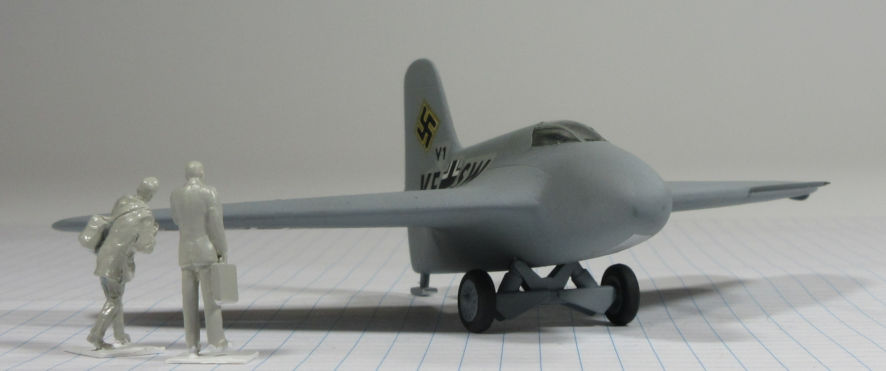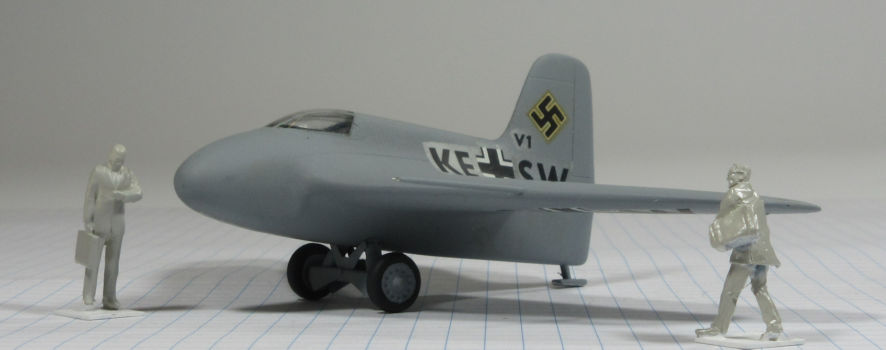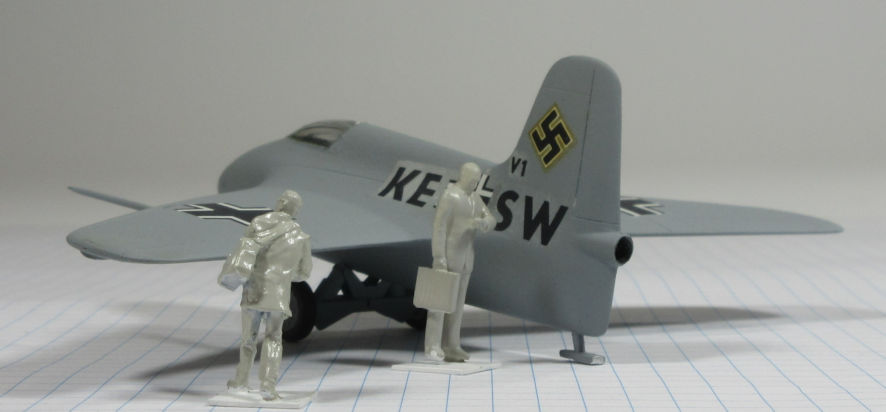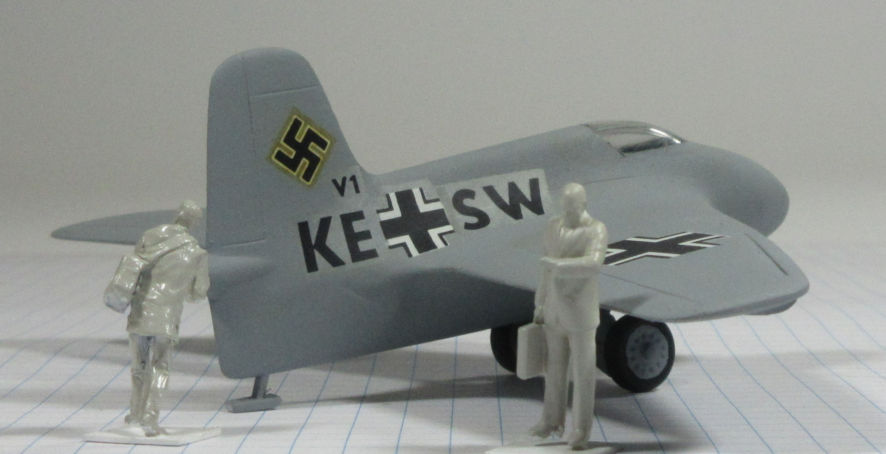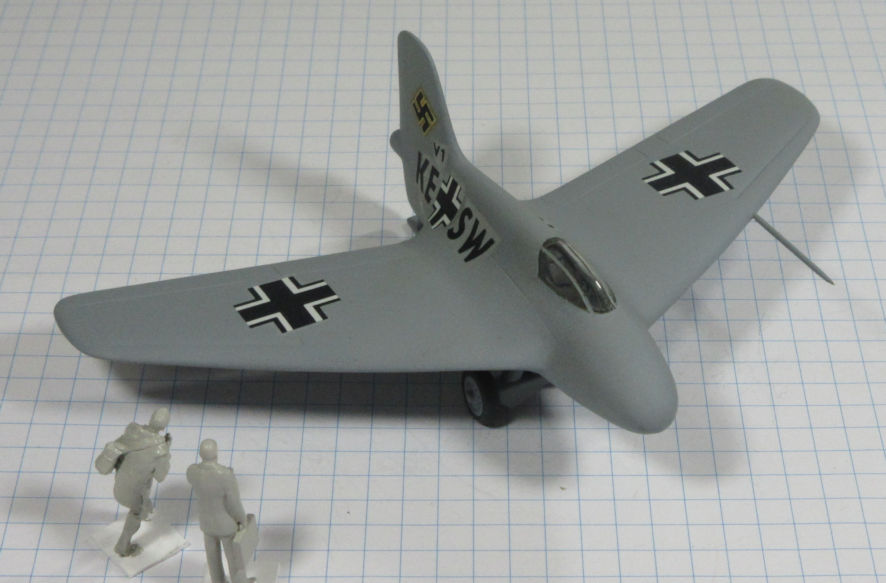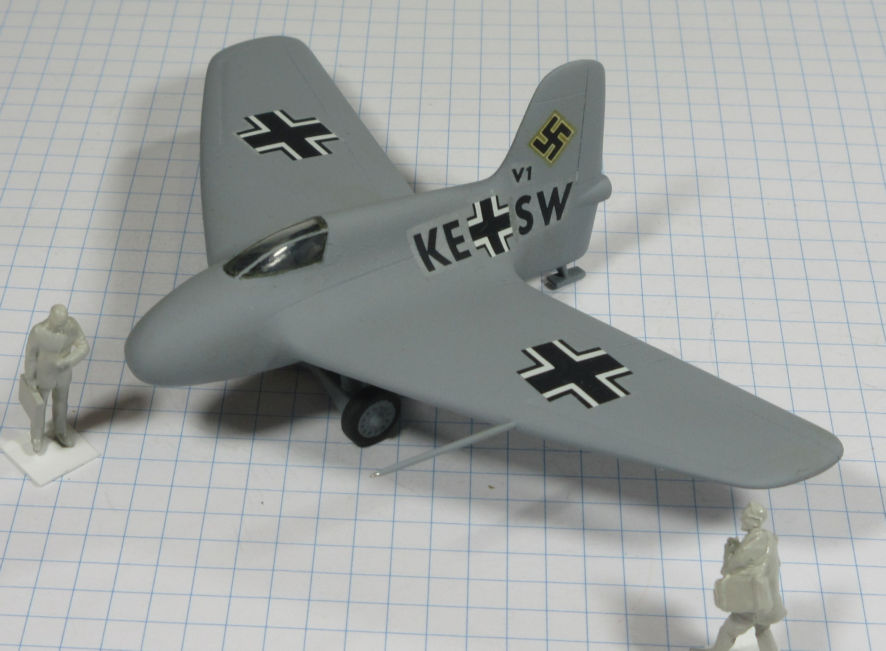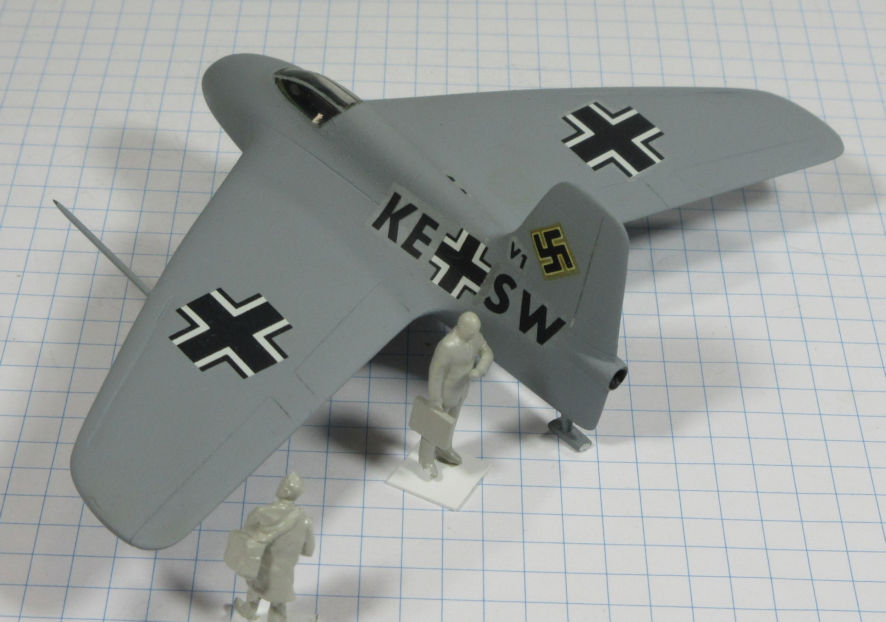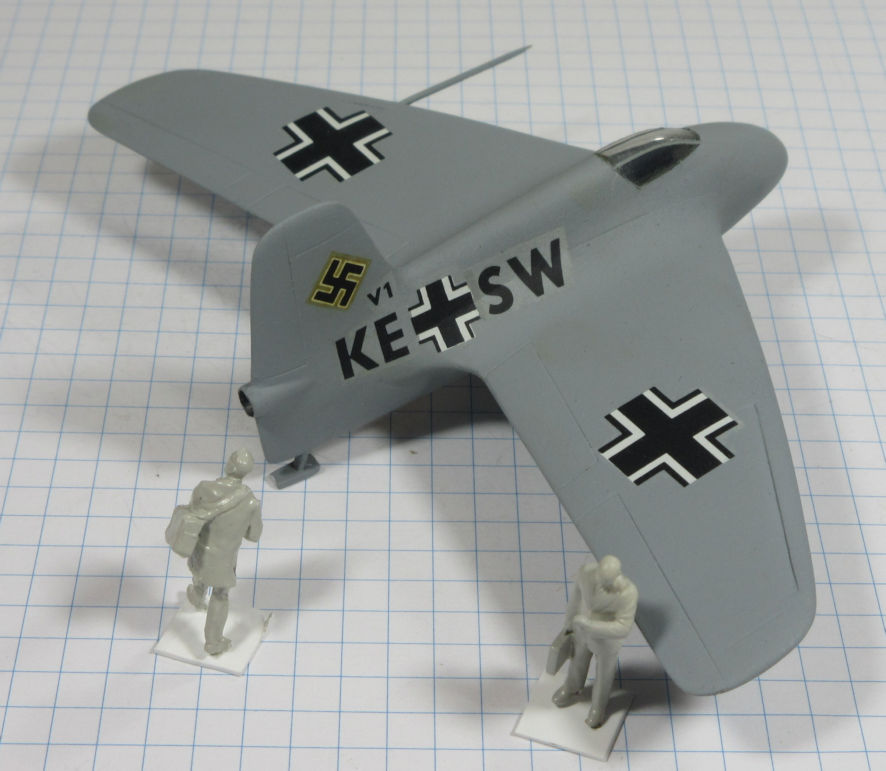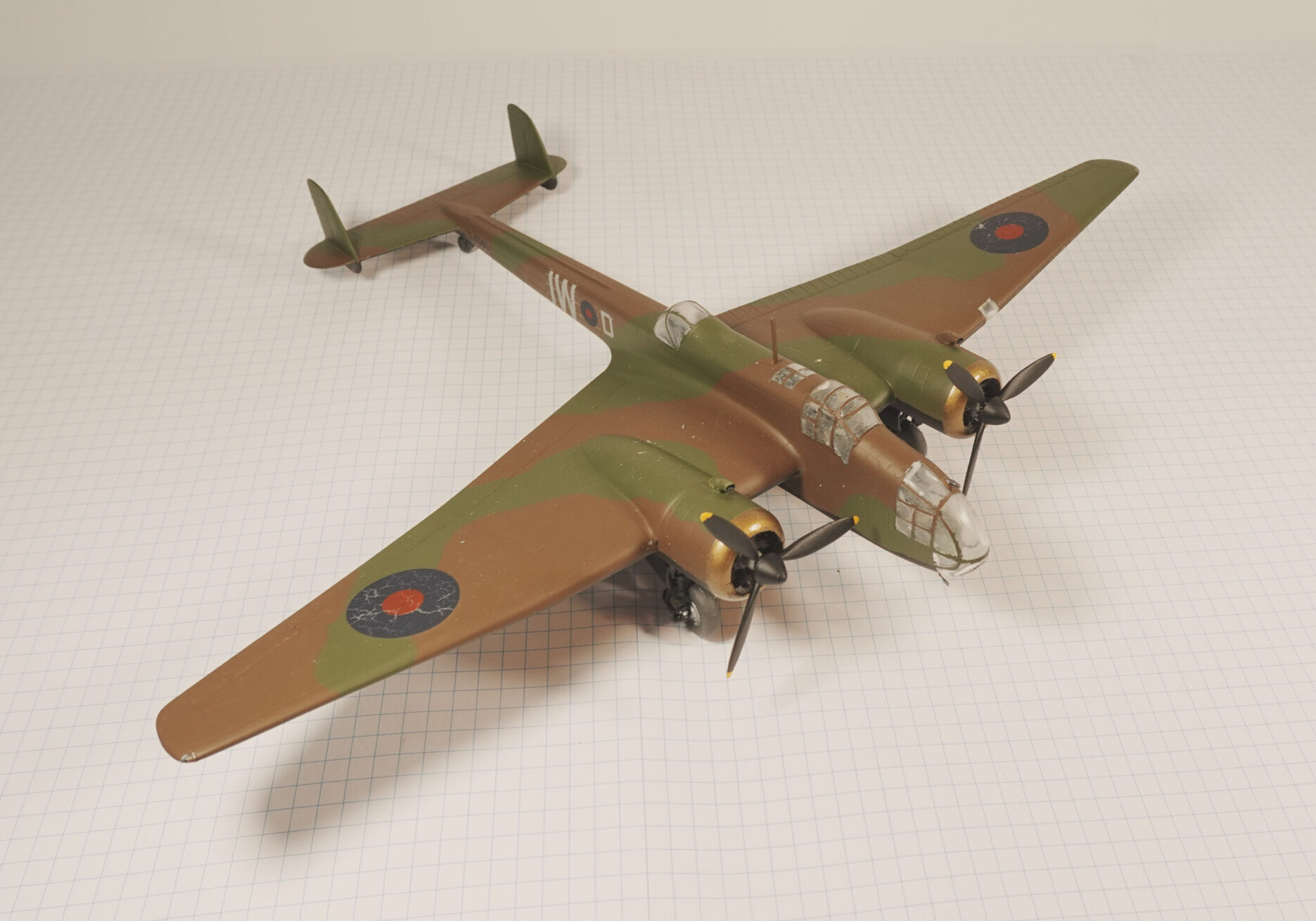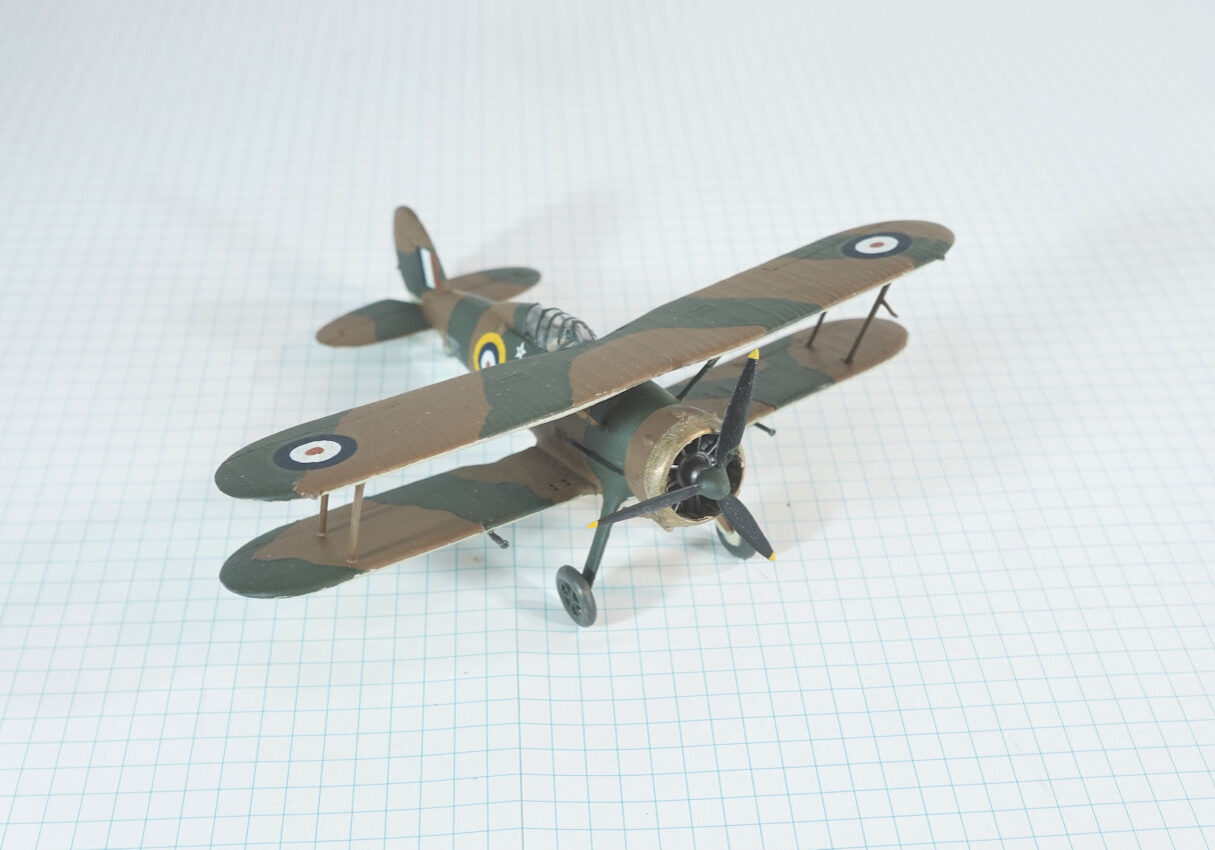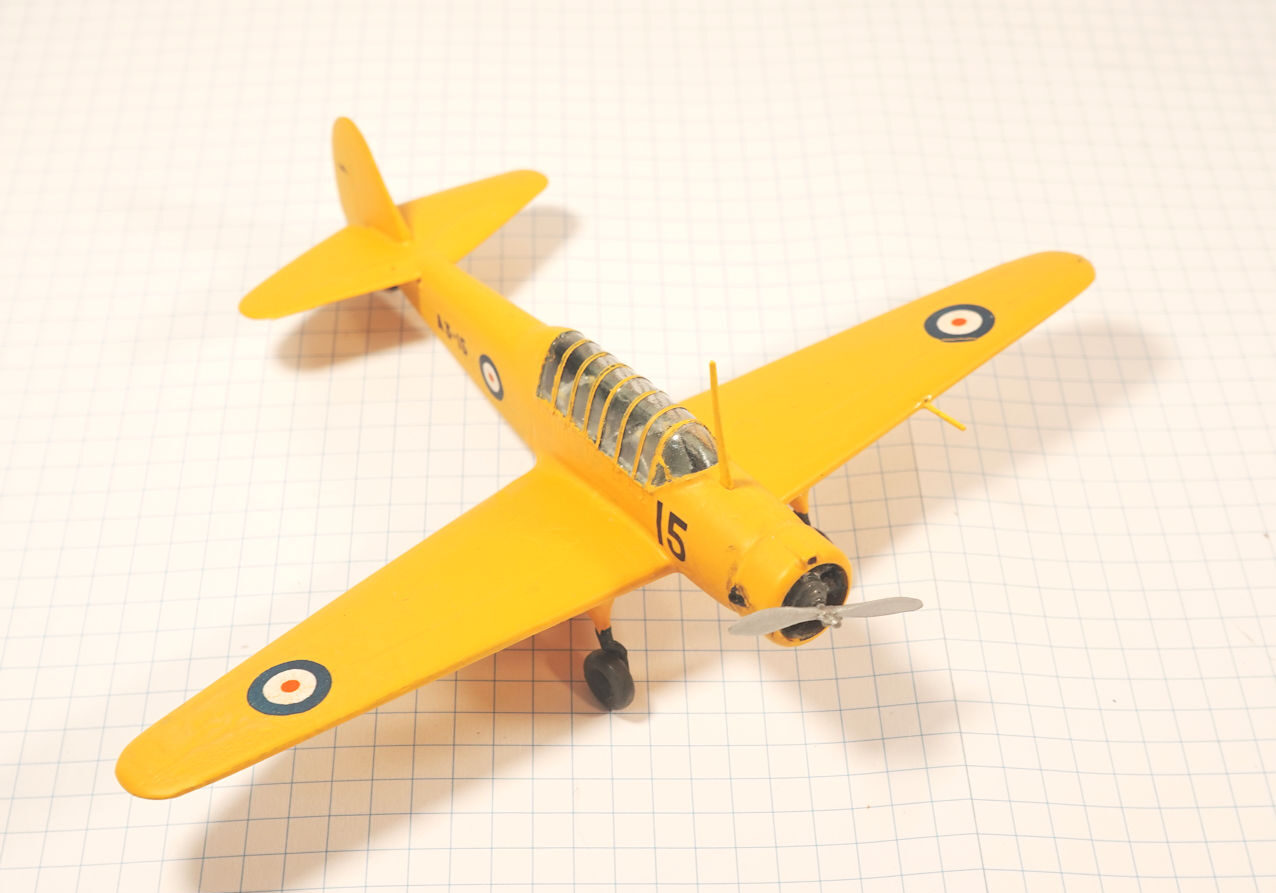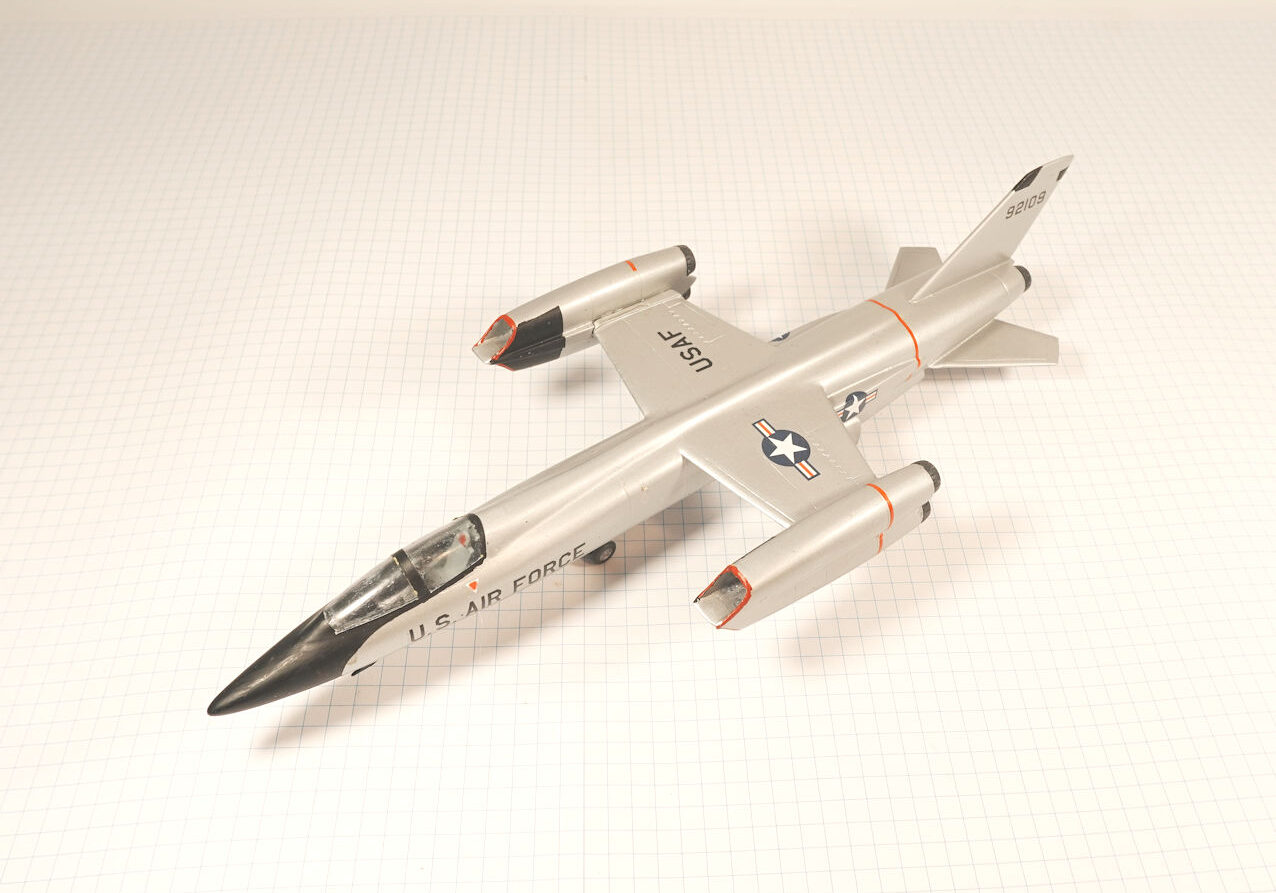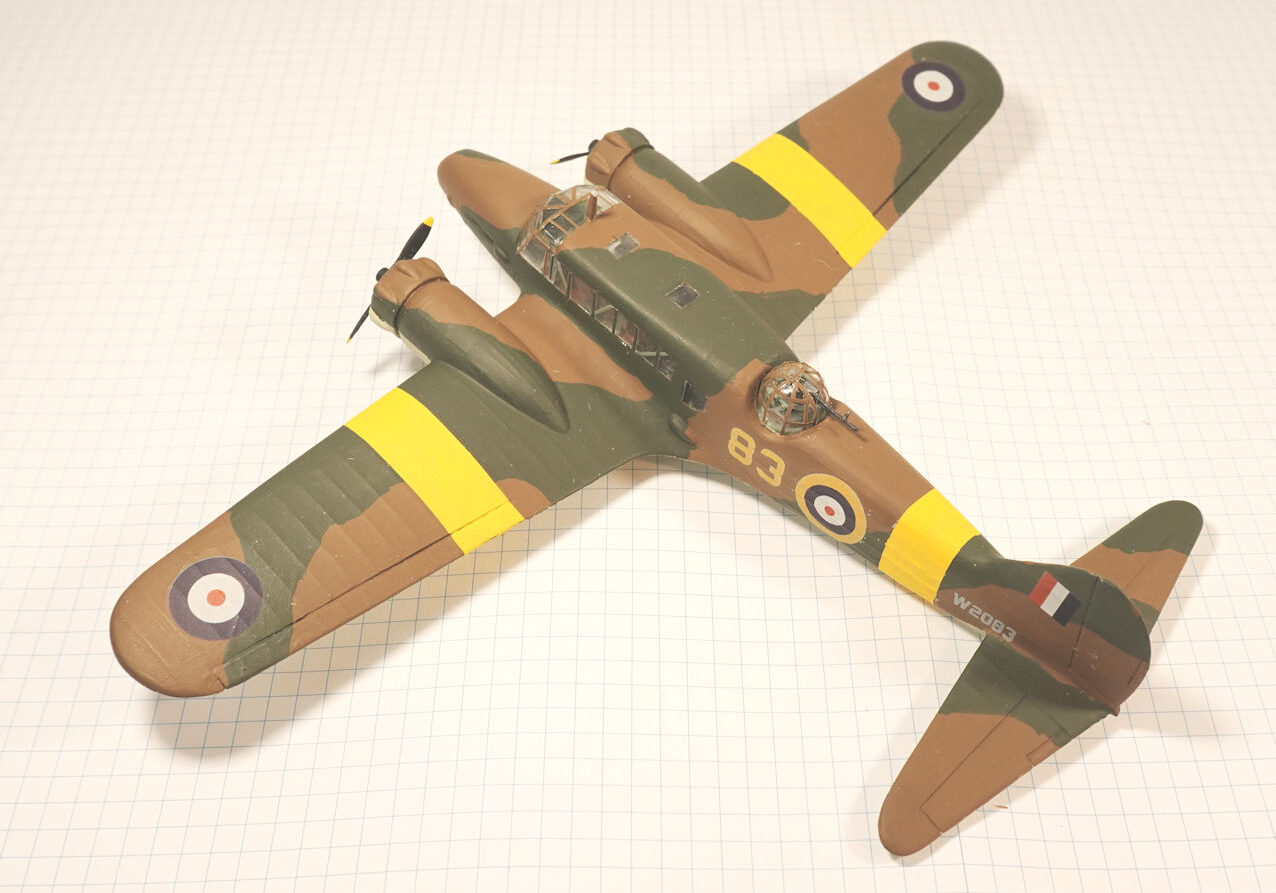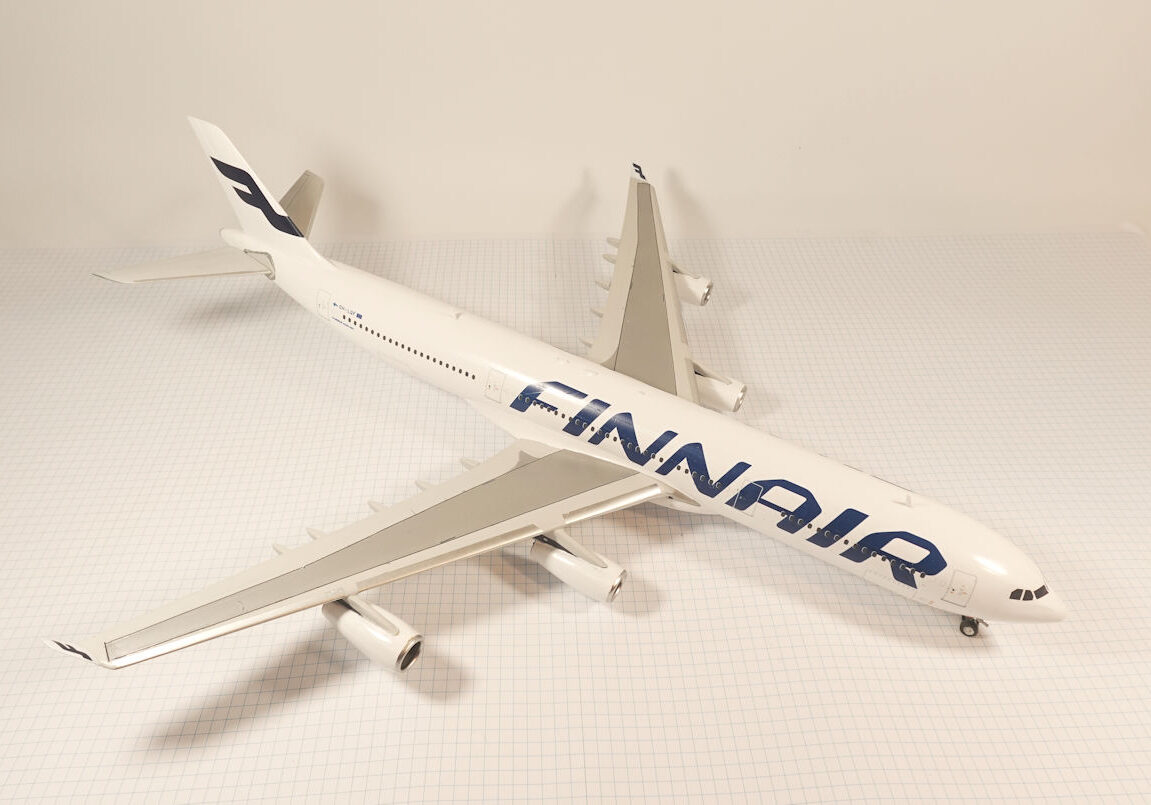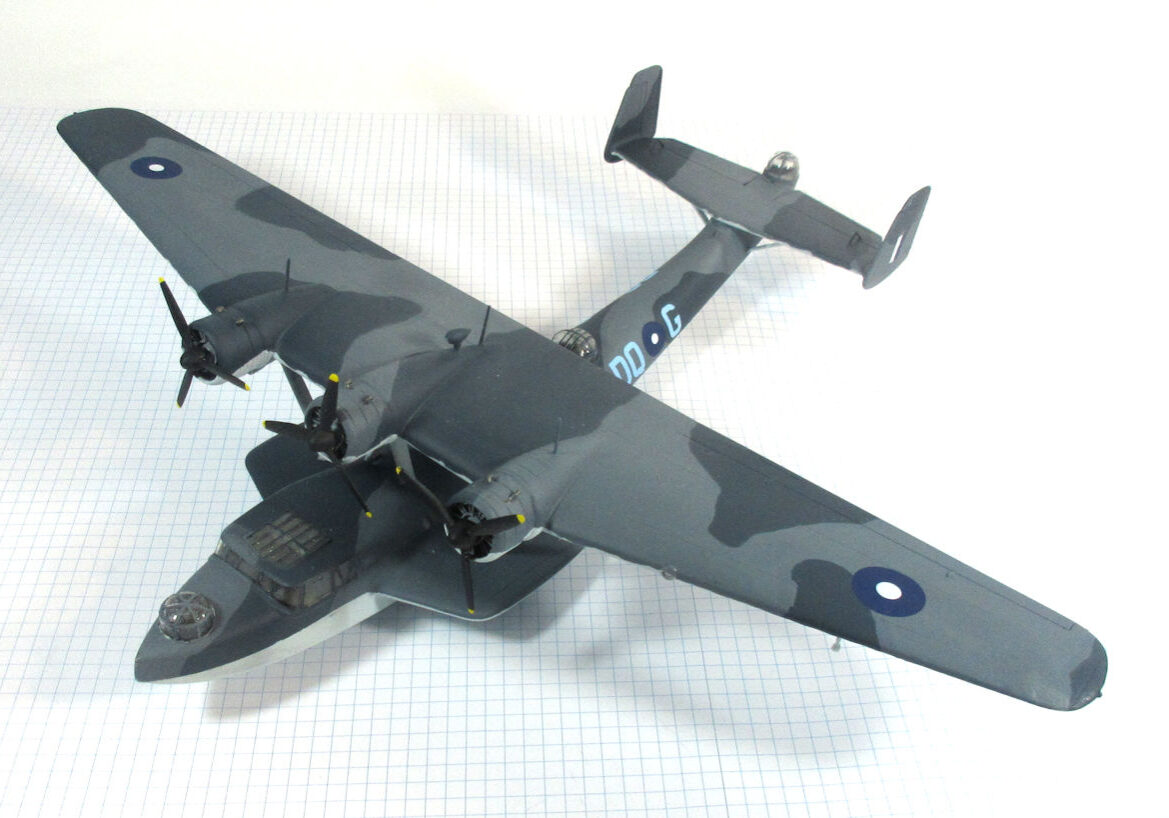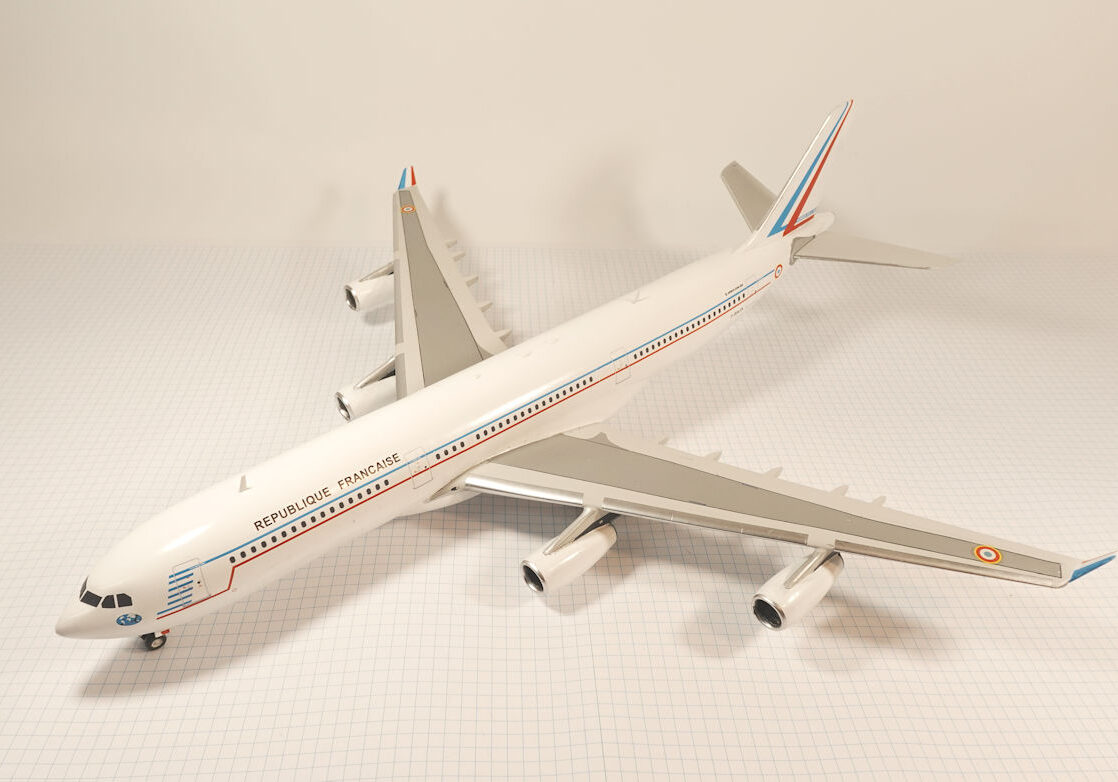History
The Messerchmitt Me163A was the prototype that led to development of the ‘Komet’ rocket fighter that became legendary in the skies over Germany towards the end of World War II.
In 1938 two new technologies, the Lippisch designed flying-wing glider and the Walter bi-fuel rocket motor were combined to create a new kind of aeroplane.
The Me163 (initially known as the Lippisch P01) was designed and constructed to test the feasibility of the concept and flew for the first time without its engine in early 1941.
The first powered flight was made on 13 August 1941, it regularly made flights exceeding 500 mph and achieved a record speed of 623.85 mph later that year.
These high speed flights so impressed the German hierarchy that they ordered the Me163 to be redesigned as a high speed interceptor which became the Messerchmitt Me163B.
In all six Me163 prototypes were constructed and most of them remained in use as test and training aeroplanes late into the war.
This model represents the first Me163.
Condor 1:72 kit. Completed in October 2001.
